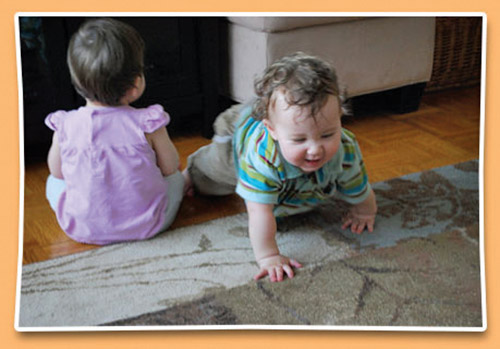
Having a baby is the greatest gift of all. It is also the greatest worry. Is my baby eating well, sleeping well, alert, following, grabbing, moving and simply ok? Is he meeting his milestones and showing promise for his future?
If there is a doubt in your mind, you must check it out; ask the pediatrician if you have any concerns. Today I will share with you what I believe is the gold standard for evaluating and treating a baby, toddler or child with any type of motor delay.
What is a motor delay? Let’s break it down to two different types, a fine motor delay and a gross motor delay. The former is an inability to use either the hands or arms for tasks such as reaching, holding objects or self-feeding. A gross motor delay involves the larger movements of the body. These include rolling, lifting one’s head on the belly, combat crawling like a soldier close to the ground and getting up on the hands and knees to creep on the floor. Sitting by oneself, and coming to sitting are also considered gross motor tasks. Today I will speak mostly about gross motor delays.
If your baby is quite still and is already five or six months old, meaning he is not rolling, comfortable on his belly or starting to be interested in coming to sit by himself, there may be an issue. Sometimes the problem is a simple one, and it is actually your fault! You are not giving the infant enough floor time on either the back or the belly. You may simply be constantly holding the child in your arms, or propping him up in a swing, boppy seat, exersaucer or jumper. These contraptions only serve to prolong the child’s inability to move himself and to create the proper neural connections needed to move oneself through space for the rest of his life.
If you or your pediatrician suspect there is a gap or delay in your baby’s motor learning there are different ways to approach and look for help. Most people seek the easiest way, that is, to contact The Early Intervention System, a federal program that is legislated by each state according to their own laws and regulations. In the state of New Jersey services are not free unless the family is below the poverty line. In addition, one cannot chose the PT, OT or speech therapist that they want. The agency gives them one that is used for that area.
It is vital that the professional that you choose has a lot of experience working specifically with infants and toddlers, and is not willing to skip vital stages of motor development to “quickly” achieve the final goal of learning to walk. Remember, no one has ever asked you how old you were when you learned to walk. However, if you have poor balance, and cannot manage to walk without falling on your face, your chances at a full and active life are challenged.
Babies should learn to roll, prone prop (push up on their bellies), combat crawl, get onto all fours and rock, creep on the hands and knees, sit by themselves, go to the couch and stand, cruise back and forth and then start, by themselves, when they are ready, to take their first steps.
A very skilled, patient and knowledgeable pediatric physical therapist can aid children and their caregivers on achieving these gross motor milestones.
By Nancy Neiditz
Nancy Neiditz, PT, created the “Torticollis, a Gentler Approach” method and has been a practicing physical therapist since 1989, as well as a Feldenkrais Practitioner® and an Anat Baniel Method Practitioner for Children™. Nancy has a private practice in Demarest and draws on her dance, yoga and Pilates background in her work. For more information, please visit her website at http://nancypt4kids.com/.








